The US Air Force could sink Iran’s new drone carrier with a single shot
- By Alex Hollings
Share This Article

Iran made a splash in the international media this month by unveiling its first drone aircraft carrier, the Shahid Bagheri, in what could be a big boost in force projection capabilities for Iran’s Islamic Revolutionary Guard Corps – at least, as long as the U.S. military decides to allow it to exist. Because over the past year, the U.S. Air Force has been testing a new weapon system that could not only take out this new Iranian warship in a single shot, but it could do it for less than the cost of a single Hellfire missile.
Last week, the Shahid Bagheri officially entered service, after sea trials that began last November. It was originally a commercial container ship and its conversion to a warship had began in 2022.
The ship was originally built by Hyundai Heavy Industries in South Korea, but now adorned with a 590-foot flight deck with a ramp at the end, this roughly 787-foot warship can prowl the waters of the Middle East for the Iranian regime.
In some of the footage that’s been released, modified Ababil-3 drones equipped with small turbojet engines affixed underwing can be seen operating from the deck of their new drone carrier.
Under normal circumstances, this surveillance drone with a roughly 23-foot-wingspan has a top speed of around 120 miles per hour and a combat radius of roughly 30 miles – but the addition of those turbojets could dramatically change the performance of the platform. This aircraft is usually relegated to intelligence, surveillance, and reconnaissance but there’s plenty of evidence to suggest that it could leverage small munitions in much the same way earlier iterations of the Ababil line have.
Something like microjet engines (probably for test) are installed under the Ababil-3 drone wing pylons onboard the IRGCN drone carrier Shahid Bahman Bagheri during the ceremony today. pic.twitter.com/igtzRMsi3x
— Mehdi H. (@mhmiranusa) February 6, 2025
Footage released by Iran also shows several other drones that are clearly modeled after Qaher 313 Iran’s infamous attempt at convincing the world it had a stealth fighter in development. Now, it seems, that aircraft has found renewed purpose as the basis for Iran’s new carrier-based drones. Iran says these drones completed flight testing in December 2024, though other reports suggest the aircraft only made its first flight at that time.

Aside from the ability to launch and recover a variety of drone aircraft, Iran has also demonstrated the vessel’s ability to launch and recover small boats – something that could benefit both crewed fast-attack-boat and uncrewed boat operations – and, according to Iranian reports, even uncrewed submersible vessels.
Because of the ship’s commercial lineage, it offers a significant unrefueled range of 22,000 nautical miles (or a bit more than 25,000 regular miles for those of us who aren’t pirates). It can reach a maximum speed of roughly 20 knots, or around 23 miles per hour, thanks to its B&W 8K90MC 20,000 kilowatt diesel engine. It isn’t clear how large of a crew this ship is meant to operate with, but it’s standard for commercial vessels of this sort to be able to sail without being resupplied for weeks on end, thanks to ample space onboard for food and water storage.
Iranian officials have claimed the vessel is armed with both short and medium-range air defense systems, though specifics regarding those weapons remain undisclosed. There’s certainly ample room on the rear of the ship, behind its main superstructure, to include a variety of surface-to-air missile systems or even add another landing area for rotorcraft.
The most important feature of this new drone aircraft carrier is its ability to launch and recover a wide variety of unmanned aircraft, but the threat this ship poses to American security and interests abroad is more indirect: As a sea-based launch platform for UCAVs and one-way kamikaze drones, fast-attack boats, or surface drones, this ship could offer Iran the ability to launch attacks from new vectors, or directions, complicating matters for military planners distributing defense assets in preparation for Iranian attacks.
This ship’s mobility and firepower could also make it easier than ever for Iran to wreak havoc on commercial shipping lanes, again, maximizing the reach and complexity of their anti-ship attacks to make it harder than ever to defend against them. This a serious threat not just to the American economy, but to global trade that relies heavily on shipments of oil and other goods traversing Middle Eastern waterways.
Related: How an F-22 pilot scared Iranian fighters away with just one sentence
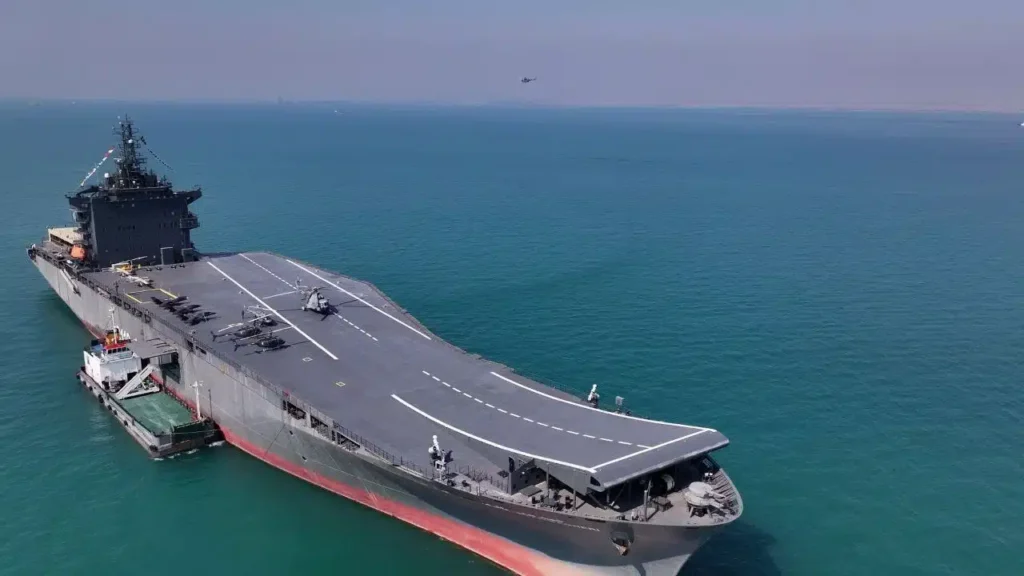
As we saw from Iranian proxies in the Red Sea in the past year, even simple technology can serious problems to global shipping, and there’s no denying that the Shahid Bagheri could do an even more effective job of throwing a big wrench in the world’s commerce machine.
But if this ship were to mount such an attack on global trade, it likely wouldn’t last very long and the United States could likely send Iran’s entire drone aircraft carrier to the bottom of the Persian Gulf using little more than a new guidance kit and dusty old bomb that’s been sitting around since the heyday of the Cold War.
Sinking a ship the size of the Shahid Bagheri is no small undertaking. These vessels are designed to withstand heavy seas, battering waves, and decades of service, and because of the immense value of the cargo they usually transport, a great deal of time and money has gone into ensuring damage to one portion of the ship doesn’t result in catastrophic hull failure. But as a commercial ship, Iran’s new drone carrier also wasn’t designed to absorb a few thousand pounds of high explosives detonating below the waterline, especially when its deposited there by an aircraft you never even knew was flying nearby. And that is exactly what the Air Force Research Lab’s Quicksink munition is all about: sending big ships to the bottom of the sea for less than the cost of a Sidewinder missile.
Quicksink is an experimental weapon system that could be described as an anti-ship JDAM, or Joint Direct Attack Munition. JDAMs entered service in 1999 as a means of turning unguided Cold War-era gravity bombs, often called “Dumb Bombs,” into low-cost precision-guided munitions. The bolt-on JDAM kit includes a tail section that houses a GPS-assisted inertial guidance system that connects directly to aerodynamic control surfaces. This allows the kit to guide the bomb into pre-planned GPS coordinates with an extreme degree of accuracy, even in weather conditions that would limit the efficacy of laser-guided weapons.
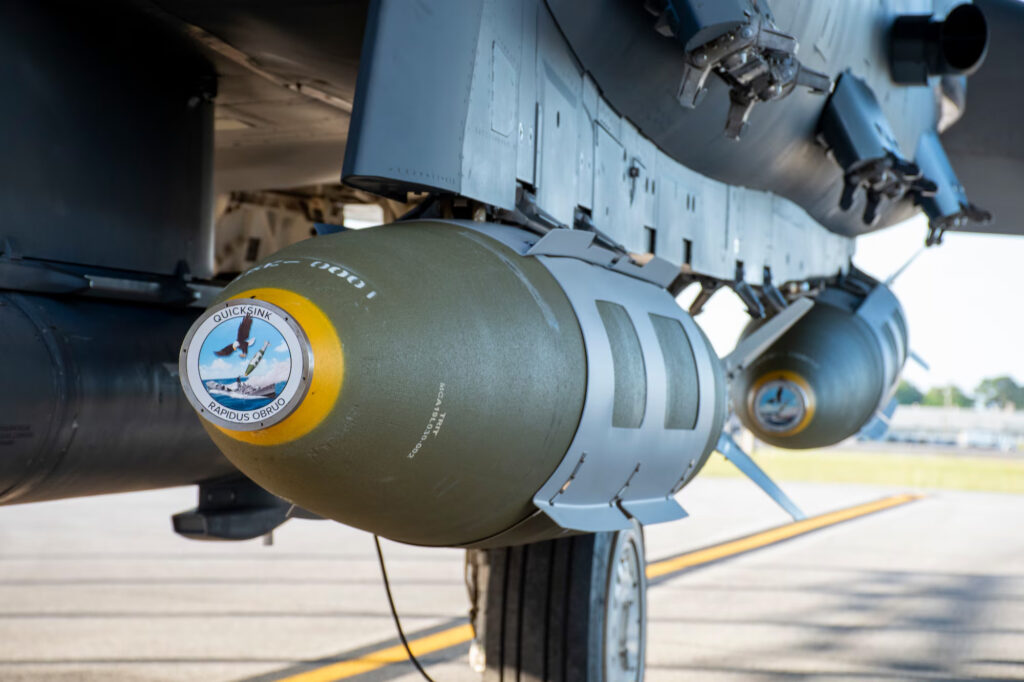
Quicksink builds upon the JDAM kit by incorporating a new multi-mode radar and infrared seeker to the front of the 2,000-pound-class GBU-31 JDAM. When dropped, the weapon uses its onboard GPS-assisted inertial guidance to close with its target, but then transitions over to the Quicksink seeker that scans the area with its onboard radar to identify the target vessel.
Once it’s identified the ship and tracked its relative velocity and direction, the munition transitions over to the infrared imaging seeker to identify it’s target point on that ship: a point on the hull of the vessel just beneath the waterline. This precision targeting allows the Quicksink JDAM to hit its target with the ship-sinking equivalent of the most prolific anti-ship weapon in the U.S. inventory, the Mk-48 heavy torpedo – one of the few weapons that can bring down a large vessel like a small aircraft carrier with a single hit.
The 20-foot-long, 3,700-pound Mk-48 heavy torpedo is among the most potent ship-killers ever to reach service. Yet, while a single Mk-48 launched from one of the U.S. Navy’s Virginia-class attack submarines would have little trouble sinking the Shahid Bagheri, a single torpedo would cost nearly $5.5 million dollars to replace.
Quicksink, on the other hand, can do the same job for around $250,000, dropped from inside the weapons bay of a B-2 Spirit flying about 15 miles out. And that’s something the Air Force has already demonstrated the ability to do.
Related: How do America’s nuclear submarines get resupplied at sea?
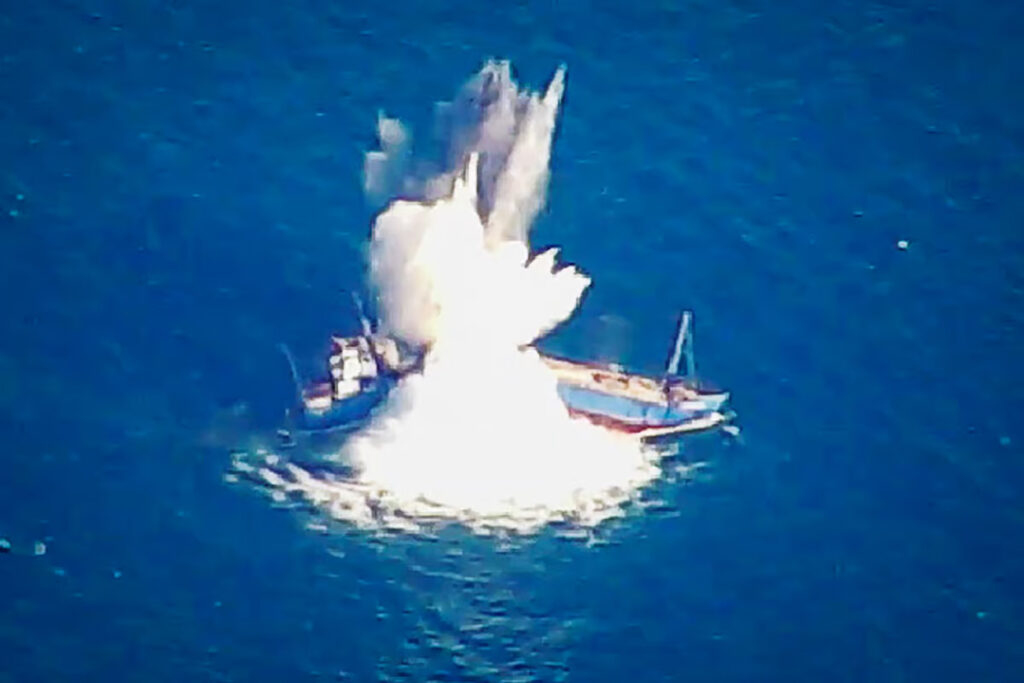
Last summer, a B-2 Spirit armed with a 2,000-pound Quicksink JDAM successfully sank the former USS Tarawa with a single shot; the vessel that was longer than Iran’s Shahid Bagheri and had a similar displacement.
Similar tests were conducted in 2021 and 2022 from under the wing of an F-15E Strike Eagle. However, the B-2 Spirit’s ability to avoid adversary detection and targeting while flying with 16 Quicksink bombs on board makes it a uniquely capable anti-ship asset for which no country currently has a response. In fact, Iran has so few large-hulled vessels in service for its Navy that a single B-2 Spirit carrying a full payload of Quicksink JDAMs could sink every Iranian frigate and corvette and still have a handful of munitions left over.
The United States also employs a variety of more expensive anti-ship alternatives that the Shahid Bagheri would likely struggle to defend against, including the less-explosive but wildly capable AGM-158C-3 Long Range Anti-Ship Missile. This is a stealth, air-breathing, ship-hunting cruise missile designed to use two-way data links and onboard artificial intelligence to hunt the open ocean in packs, traversing hundreds of miles while looking for and identifying target vessels. Once it locates a target, it uses onboard electro-optical sensors to identify the weakest point in the ship’s defenses and strikes it with its 1,100-pound high explosive warhead.
Put simply, Iran’s old cargo-ship turned drone aircraft carrier may be an effective means of maximizing the impact of the country’s kamikaze drones, but like the Qaher 313 now sitting on its flight deck, the Shahid Bagheri is likely more about Iran trying to shape foreign perceptions of its military capability than it is about fielding actual military capabilities.
And it’s something the U.S. Air Force can easily deal with.
Read more from Sandboxx News
- The UK is recycling old jets to build its next-generation Tempest fighter
- The Pentagon is getting a counter-drone task force as threats from unmanned aerial systems increase
- Does the CIA have its own fire department?
- Russia is sending ‘hundreds’ of its war wounded for treatment in North Korea, ambassador says
- Lockheed Martin’s upcoming AGM-158 XR stealth missile is scary
Related Posts
Sandboxx News Merch
-

‘AirPower’ Classic Hoodie
$46.00 – $48.00 Select options This product has multiple variants. The options may be chosen on the product page -

‘Sandboxx News’ Trucker Cap
$27.00 Select options This product has multiple variants. The options may be chosen on the product page -

‘Kinetic Diplomacy’ Bumper Sticker (Black)
$8.00 Add to cart

Alex Hollings
Alex Hollings is a writer, dad, and Marine veteran.
Related to: Airpower

A Green Beret remembers his favorite foreign weapons

The AGM-181 LRSO missile will modernize America’s nuclear triad
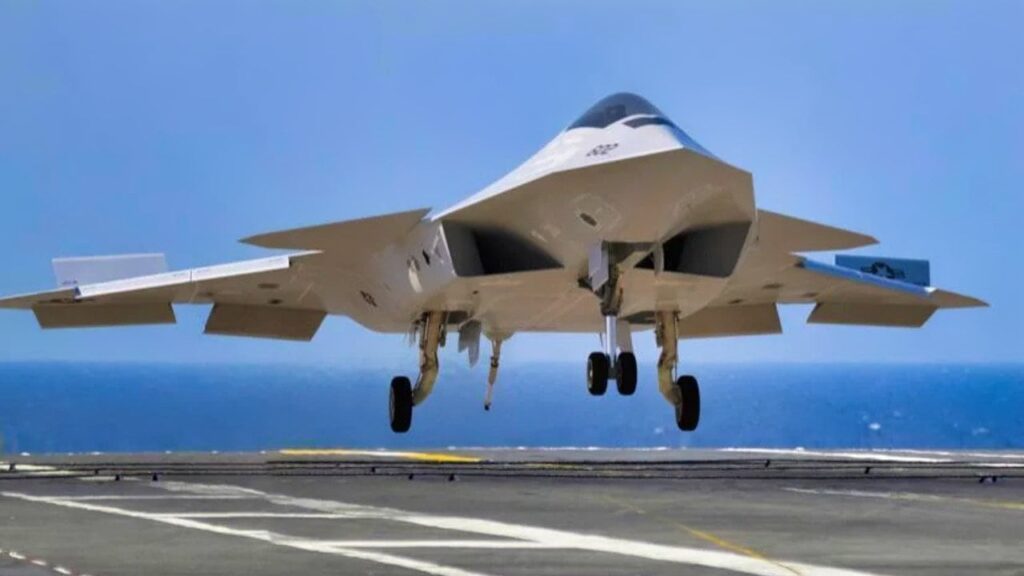
Navy will soon announce the contract award for its F/A-XX 6th-generation jet, according to reports
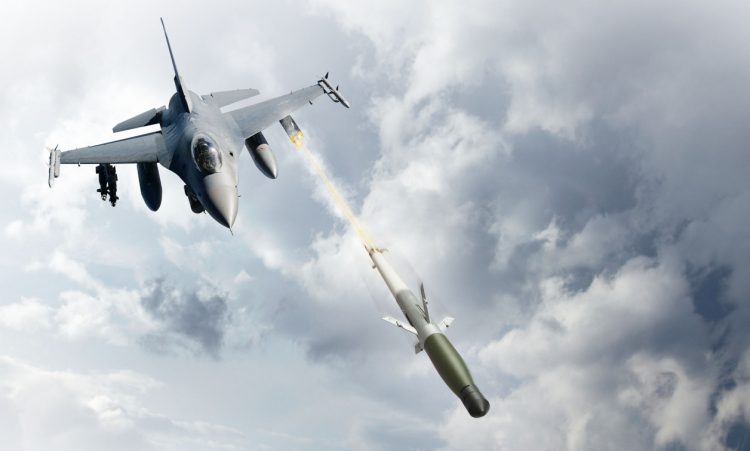
America’s new air-to-air missile is a drone’s worst nightmare
Sandboxx News
-

‘Sandboxx News’ Trucker Cap
$27.00 Select options This product has multiple variants. The options may be chosen on the product page -

‘AirPower’ Classic Hoodie
$46.00 – $48.00 Select options This product has multiple variants. The options may be chosen on the product page -

‘AirPower’ Golf Rope Hat
$31.00 Select options This product has multiple variants. The options may be chosen on the product page -

‘Sandboxx News’ Dad Hat
$27.00 Select options This product has multiple variants. The options may be chosen on the product page
